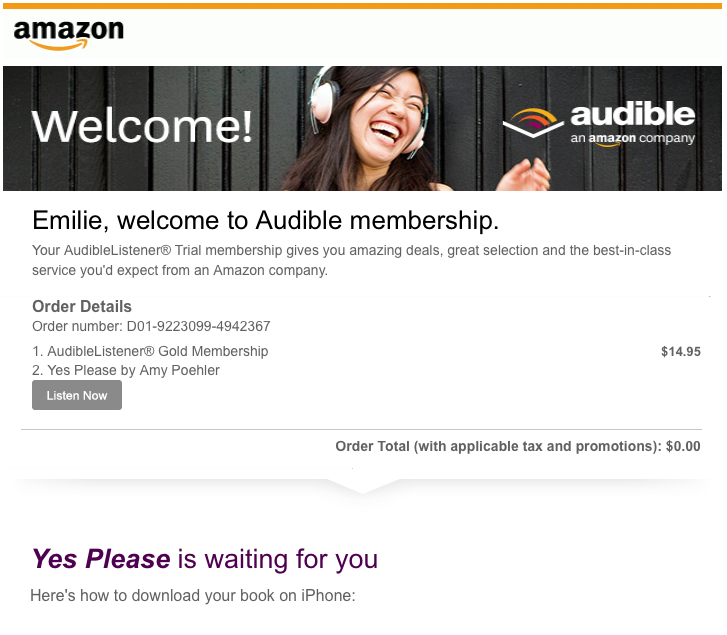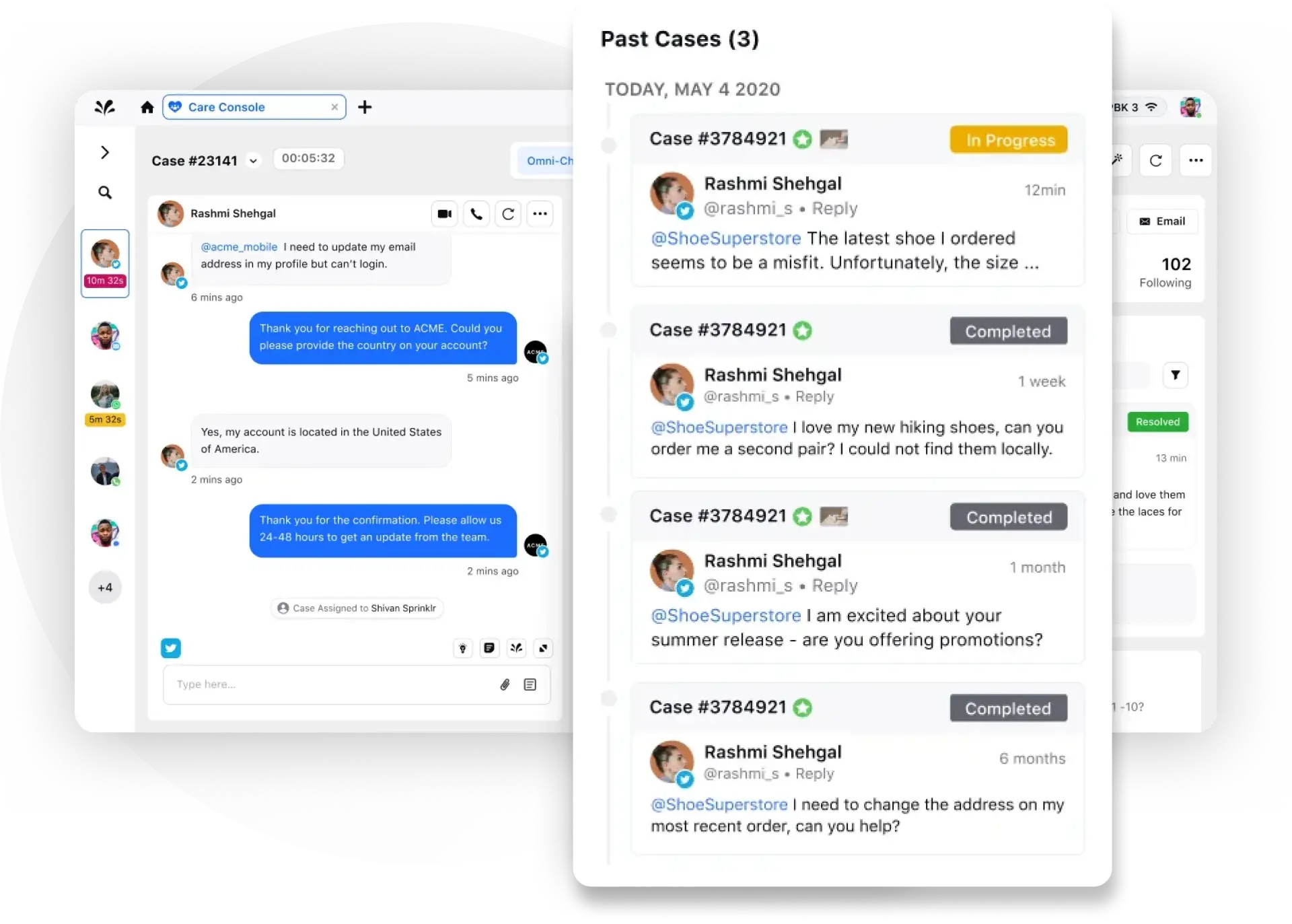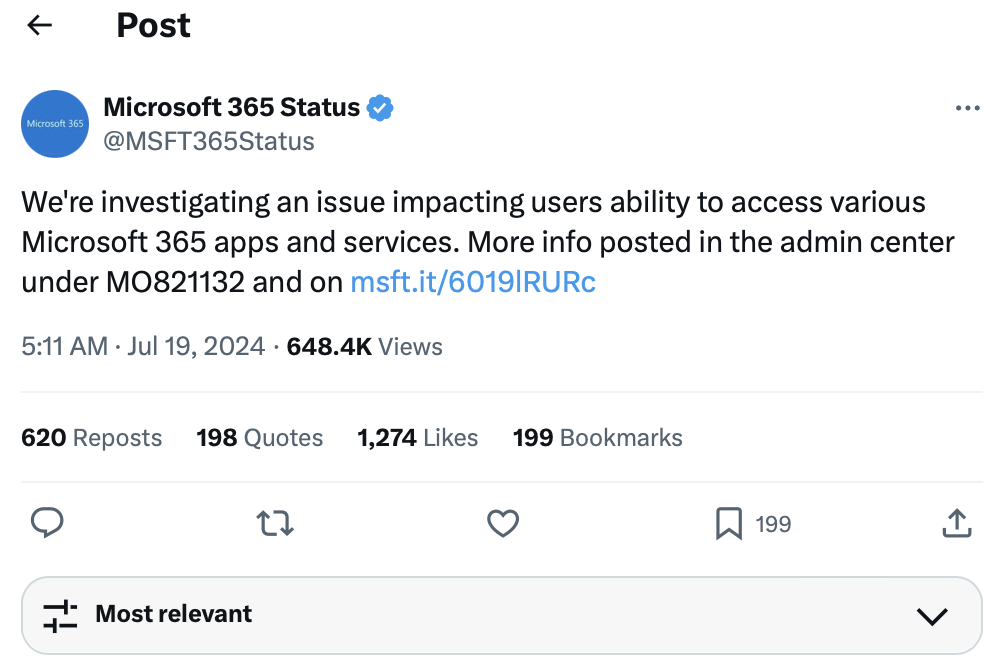What is customer interaction?
Customer interaction is the exchange between a business and its customers across various touchpoints, such as contact centers, social media and in-store experiences. Every interaction carries significant weight in today's landscape, where customer experience is paramount.
Each customer interaction has the potential to elevate customer satisfaction by addressing immediate needs and concerns, foster loyalty by building trust and memorable experiences and enhance retention by making customers feel heard and valued.
As consumer psychology has evolved with technological advancements, modern buyers increasingly demand personalized and prompt responses. The desire for instant gratification and tailored experiences drives this shift. Thoughtful and strategic customer interactions ensure they invest their faith in your brand.
But how do these interactions typically originate? Let's take a closer look.
7 types of client interactions
Before we look at the types, let’s first understand the different categories of customer interactions:
Proactive customer interactions: These include follow-ups, check-ins and promotions. Businesses initiate contact to enhance customer satisfaction, provide value and encourage customer engagement.
Reactive customer interactions: These involve responding to customer requests, questions, complaints and support inquiries. The focus is on streamlining customer case management, addressing immediate needs and resolving issues promptly.
Now, let’s look at the common types.
Type of Interaction | Description | Channels |
Transactional | Focused on completing a specific task or transaction, such as purchasing a product, making a payment or returning an item. | Website, mobile app, phone, in-store |
Service | Involves providing assistance or support to customers, including troubleshooting issues, answering inquiries or resolving complaints. | Phone, email, live chat, social media, in-store |
Informational | Sharing information about products, services, or company updates. | Website, email, social media, content marketing |
Promotional | Marketing products or services to customers. | Email, SMS, social media, advertising campaigns |
Feedback | Gathering customer feedback through customer surveys, reviews or social media. | Customer surveys, review platforms, social media |
Social | Engaging with customers on social media platforms. | Social media |
In-Person | Face-to-face interactions with customers, such as in stores or at events. | Retail stores, events, trade shows |
Top benefits of customer interactions for businesses
You may wonder, "What's the payoff for investing so much effort in interacting with customers?"
Well, there are several benefits to strong customer interactions:
Enhanced customer loyalty
Effective customer interactions signal that your customers' opinions and satisfaction matter to you. Ensuring customers feel heard and understood while resolving their issues fosters a sense of value and trust. This solidifies your reputation as a customer-centric brand and drives loyalty. According to Gartner, there's an 82% probability that customers will repurchase or renew their service if they perceive value during a service interaction.
Improved revenue
Satisfied customers often lead to increased sales. Positive interactions that consistently deliver value encourage customers to spend more on your products and services, directly boosting your revenue.
Increased referrals
Satisfied customers are powerful brand advocates. Customers who receive value during service interactions are 97% more likely to share positive word-of-mouth recommendations. Whether sharing their experiences with friends and family or on social media, this organic promotion is invaluable, as personal recommendations are often the most trusted.
Reduced customer churn
According to Gartner Digital Markets, 60% of software buyers regret a purchase within the last 12 to 18 months, putting them at risk of churn. Proactive customer interactions help address concerns before they escalate, reducing the likelihood of customers leaving for a competitor.
Key stages of consumer interaction
Customer interaction has five distinct stages. Each stage keeps the customer in focus and every step leads to the next with context intact.
Initiation
The first interaction sets the tone for the customer journey. A warm and personalized greeting makes customers feel welcome and valued. This can be achieved through tailored welcome messages on your website or app. For example, Amazon greets new users with a customized welcome screen highlighting their recent purchases, personalized deals or recommendations based on their preferences, immediately making them feel appreciated.

2. Assessment
In this stage, actively listening and asking the right questions are essential for understanding the customer's needs. For instance, during a sales interaction, you might ask, "What specific features are you looking for?" or "Can you tell us more about your requirements?" Similarly, in certain customer service scenarios, interactions often focus on understanding customers' issues and how they impact them. This stage is about gathering critical information to guide the next steps.
3. Interaction
Once you've understood the customer's needs, agreeing on a solution is essential. This stage involves demonstrating empathy, understanding the desired outcomes and setting clear expectations. In a customer service context, it provides information, resolves issues or offers solutions. It's also crucial for contact center agents to utilize their skills in dealing with angry customers over calls and emails, ensuring they don't overpromise while maintaining a positive and constructive dialogue.
4. Resolution
At this stage, the focus is on delivering the agreed-upon solution, whether a product, service or information that meets the customer’s needs. On the operational side, agents may need to place customers on hold while they seek an appropriate resolution. Best practices suggest that agents should always ask for the customer’s permission before doing so and aim to provide a meaningful response and solution as quickly as possible.
For more complex issues, omnichannel routing can enhance case handling and expedite resolution. However, if a particular channel seems more effective for troubleshooting, agents should assess the customer’s comfort with it and explain why it’s the ideal choice before switching, always seeking the customer’s consent first.
How Sprinklr helps
As the demand for stronger customer connections grows, the need to minimize dead air during live conversations becomes more crucial. Sprinklr's AI-powered agent assist software is the solution that can significantly enhance your customer interactions and operational efficiency.
Powered by Sprinklr's proprietary AI models, the agent-assist software automatically recommends similar resolved cases, relevant knowledge base and guided workflows based on the conversation's context. Agents can leverage these real-time insights to make informed decisions, reduce average handling time, seize upsell opportunities and ensure SLA compliance.

5. Evaluation
If the customer inquires about the problem after you resolve it, offering a brief explanation is crucial. While doing so, focus less on the issue itself and more on the steps your company is taking to prevent similar occurrences in the future. This approach reassures the customer and reinforces their confidence in your brand's commitment to continuous improvement.
Additionally, during this stage, agents must ask if there's anything else they can assist with. This is not just a courtesy, but a demonstration of your commitment to providing comprehensive support. This approach ensures the customer leaves the interaction feeling fully supported.
6. Feedback
In the final stage, gathering feedback is crucial to understanding the customer’s experience. This often involves informing customers that they will receive a follow-up email or SMS shortly after the interaction, inviting them to share their thoughts through a customer satisfaction survey. This feedback is invaluable for continuous improvement and ensuring the customer’s voice is heard.
🔍Further Read: What is Customer Feedback Management and How to do it
Now that you know the stages of the customer interaction cycle and understand empathy's role let's see how this attribute orchestrates a conversation.
Customer interaction stage | Empathetic response | Non-empathetic response |
Initiation | "Good morning, [Customer's Name]. I'm sorry to hear about the delay in your order. I understand how frustrating that must be." | “Good morning. How can I help you?" |
Assessment | “I understand how disappointed you must feel. Could you help me with your order no. and the last four digits of your credit card to verify the particulars, please?” | "Your order is late? Well, I'll need some verification first. Can you tell me your full name, address and order number?" |
Interaction | “Thanks for being so patient. I understand how disappointed you must feel. Let's solve this together.” | "I see. We're experiencing some delays. Let me check the status of your order." |
Resolution | "May I request you to put me on hold for a minute to find out the root cause of the delay and see if I can expedite your order?" "I've expedited your order and will follow up once it's on the way." | “I'll check the status of your order and get back to you." |
Evaluation | "Is there anything else I can help with? " | “Your order should arrive in a few days. If there’s nothing else, we can end the call.” |
Feedback | "Thank you for your understanding. If you have any more concerns, don't hesitate to reach out. We're here for you.” “After this call, you’ll receive an SMS about your experience with us. Please help us improve our service standards with your precious feedback.” | “Thanks for calling XYZ company. After this call, you'll receive an SMS. Please share your feedback.” |
Must Read: Display Empathy in Customer Service in 5 Steps
How to build good customer interactions in 5 ways
Building effective customer interactions is essential for creating memorable and positive experiences. Here are five strategies to enhance your customer interactions, illustrated with practical scenarios and examples:
Personalize your approach
Imagine Emily, a long-time customer of your online boutique clothing store. Your marketing team sends her a personalized email on her birthday, greeting her by name and suggesting items based on her previous purchases.
This targeted outreach, supported by historical customer data, creates a deeper connection with Emily, making her feel valued and appreciated. By remembering her past interactions and presenting a curated selection tailored to her preferences, your brand stands out as attentive and considerate and reinforces this image, strengthening the relationship with Emily.
As a result, when Emily engages with your brand through her preferred communication channel, the interaction starts on a positive note, infused with a sense of mutual respect and admiration. This personalized touch fosters a stronger relationship and enhances her overall experience with your brand.
💡 Pro Tip
Effective customer segmentation is the key to personalization. By categorizing your customers into distinct groups based on age, gender, location, life stage (single, married, retired, empty nester, etc.) and preferences, you can tailor your communications to resonate more deeply with each segment. This targeted approach enhances engagement and strengthens brand recall long after the purchase.
Gathering this crucial data can happen at various stages of the customer journey:
At the point of purchase: Information such as job title, geographic location, or even the reason for choosing your brand can be captured during the buying process.
Online interactions: For e-commerce businesses, leveraging opt-in email lists allows you to segment your marketing and promotional messages based on the specific offers that attract each customer.
Beyond basic demographics: Some demographic details, like age or marital status, may require additional strategies, such as surveys or loyalty program data, to acquire.
By strategically collecting and utilizing this information, you can craft personalized experiences that resonate with your customers fostering loyalty.
Listen actively and empathetically
Active listening means fully understanding and responding to your customers. Go beyond hearing words to grasp the customer sentiment and intentions behind them.
For example, imagine that during a support call, your customer service representative listens attentively to your customer describing a technical issue with his new device. Your agent acknowledges his frustration, apologizes for the inconvenience and asks probing questions to understand the problem fully. The agent assures the customer, who is already upset, of the best possible solution as soon as possible. This approach makes customers feel valued and understood, fueling trust and loyalty.
Provide clear and prompt responses
Customers highly value clarity and timeliness in responses. For instance, if unforeseen circumstances lead to a delayed delivery or a network outage disrupts service, acknowledging these issues with empathy can significantly impact customer satisfaction.
It’s important to communicate openly about the situation, providing clear, detailed information on what went wrong and what steps are being taken to resolve the issue. This level of transparency empowers customers, making them feel informed and in control.
By effectively managing these challenges with honest communication and timely updates, you can calm even the most frustrated customers and maintain their trust in your brand.

Empower your team with the right tools
Your customer service software heavily influences the quality of customer interactions at your company. Relying on outdated, inflexible systems that don’t adapt to the evolving customer service landscape can hinder your ability to deliver high-quality interactions.
Equipping your team with advanced contact center technologies — such as unified agent consoles, comprehensive knowledge bases and chatbots — can significantly enhance their efficiency. These tools enable your agents to focus more on engaging with customers and less on searching for solutions, reassuring you about the productivity of your teams and leading to more effective and satisfying interactions.
Investing in modern technology empowers your team to provide quicker, more accurate responses and foster a superior customer experience.
Train your teams to uphold excellence
Continuous agent training and coaching ensures your customer service team learns the skills required to interact with customers. It helps them handle customer interactions effectively, providing consistent and high-quality service. Your training modules should cover newer tools, customer service techniques and product updates.
Consider using a learning management system (LMS) to implement continuous training. These platforms offer a centralized place to create, distribute and track training programs. An LMS can deliver interactive modules, quizzes and performance assessments, ensuring an engaging and effective learning experience for your team.
Make customer interaction meaningful with Sprinklr Service
Emerging brands frequently begin their customer interactions with high enthusiasm, building their reputation. But over time, consistency fades, leaving their customers saying, "XYZ brand is no longer what it used to be."
Don't let this happen to your brand. Invest in Sprinklr Service, an AI-powered customer experience management suite, to automate and enhance customer interactions.
Sprinklr Service allows you to maintain excellent responsiveness and service quality as your business grows. With Sprinklr AI+, the customer service solution constantly learns and adapts to your customer's changing needs while enabling your agents to provide positive experiences consistently.
Experience today what the modern-day customer engagement tech stack looks like.
Frequently Asked Questions
related products
Thank you for contacting us.
A Sprinklr representative will be in touch with you shortly.
Contact us today, and we'll create a customized proposal that addresses your unique business needs.
Request a Demo
Welcome Back,
No need to fill out any forms — you're all set.




